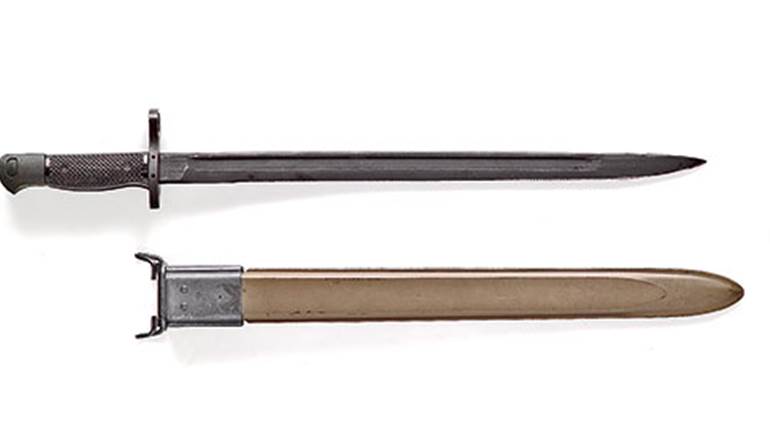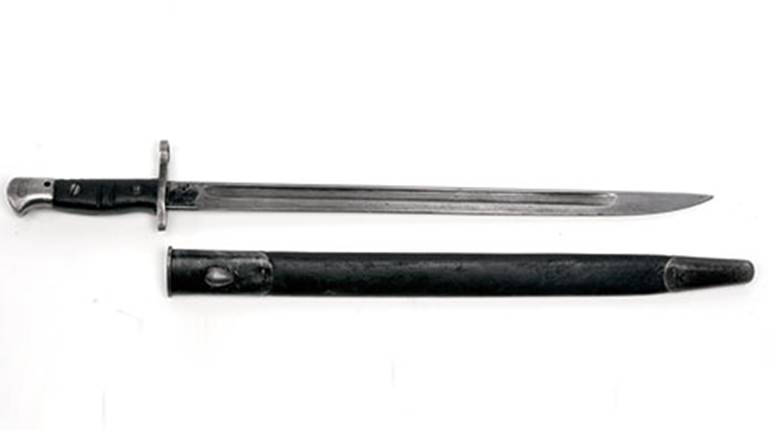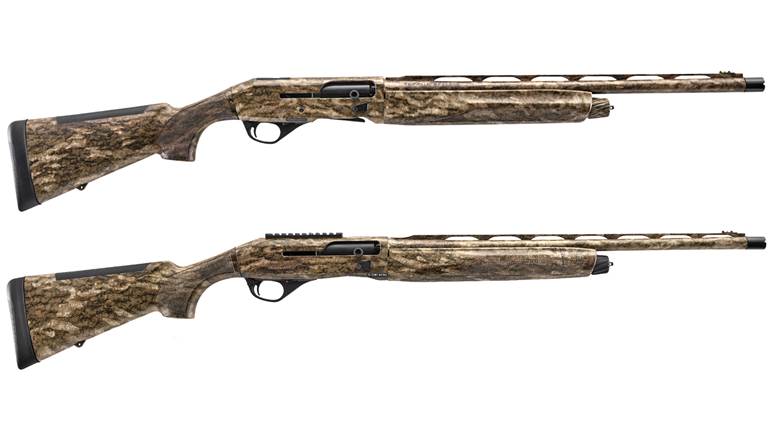
This U.S. M1917 bayonet came to us in a British P’13 scabbard. Typical M1917 markings include the maker’s name, a U.S. Ordnance eagle and the date of manufacture on the ricasso. The M1917 bayonet was standard-issue with the M1917 rifle, as well as U.S. “trench” shotguns.
Q. I have one of the new replica Model 97 “trench” shotguns and have been looking for a bayonet to go with it. I haven’t been able to find a Model of 1917 bayonet for less than $150, but a friend seemed to recall I could put some kind of British bayonet on the gun. Do you know what he’s talking about?
A. In 1913, the British adopted the Pattern 13 rifle in .276 to replace the Short, Magazine, Lee-Enfield, but World War I broke out before they could get the rifle and new cartridge into production. Apparently, switching cartridges during a major war was considered a bad idea, so the design was adapted to the .303 British cartridge and approved on October 22, 1914. The British contracted with Winchester, Remington and Eddystone in the United States to produce .303 Pattern14 rifles. Winchester and Remington (but not Eddystone) also produced Pattern 13 sword bayonets with 17” blades to go with them. About 1.5 million were produced.
When the United States entered World War I, the P'14 design was adapted to the .30’-06 Sprg. cartridge and production resumed at all three facilities as the U.S. Model of 1917 Rifle. The U.S. M1917 bayonet was adopted at the same time, and it was identical to the P’13 bayonet, except for the U.S. Ordnance and acceptance markings and the addition of a clearance hole in the pommel. Also, more than 500,000 P’13 bayonets were purchased from the British and re-stamped with U.S. markings. When the United States adopted the 1897 Winchester and other “trench” shotguns, Springfield Armory and Winchester engineers devised ventilated metal handguard and bayonet-lug assembly that would accept an M1917 bayonet.
The method of attachment to the rifles was the same, but the scabbards differed in the manner they were fitted to the soldier’s web belt. The P’13’s scabbard had a lug that slid into a separate frog for the British Pattern 1908 Infantry Equipment. For the M1917, a brass hanger was attached to the top rear that slid into eyelets on the bottom of the American M1910 Infantry Equipment belt.
These days, U.S. M1917 bayonets command a premium over the P’13 bayonets, even though about 2.5 million M1917 bayonets were made. We recently ordered a P’13 bayonet for $49.95 plus a $5 handpick fee and shipping from Southern Ohio Gun (Dept. AR, P.O Box 590, Lebanon, OH 45036; (800) 944-4867; www.southernohiogun.com) and found its P’13 scabbard contained a Remington-made U.S. M1917 bayonet. Obviously, we lucked out, but a P’13 should work for your purposes.
- Mark A. Keefe, IV
Originally published June, 2006



































